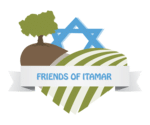Parshat Chaye Sarah – 2010
Parshat Chaye Sarah October 30, 2010 Leah Goldsmith Chazal tell us that Yitzchak mourned for his mother three years. This is outstanding in that a person generally mourns for a s
Lech Lecha- Vayera – Sarah, Mother Earth and….. 2010
Lech Lecha- Vayera – Sarah, Mother Earth and….. October 22, 2010 Leah Goldsmith Chazal dedicate many discourses to the superpower traits of the Matriarchs and prophetesses. &
Parashat Noah a lesson on the Noachide Laws
Rabbi Moshe Goldsmith Itamar on Genesis Chapter 6:9
Vezot HaBracha – This is the blessing – 2010
Vezot HaBracha – This is the blessing 2010 September 22, 2010 Leah Goldsmith This is the last parsha of the Torah. It is also the last day of Moshe Rabbeinu’s life. He st
Parshat Matot – Masey – 2010
Parshat Matot – Masey July 8, 2010 Leah Goldsmith “And the Lord spoke to Moshe saying: Command the Children of Israel and say to them, when you come into the Land of Kena
Parshat Shlach – 2010
Parshat Shlach June 6, 2010 For those of you who wish to hear mussar- read my old torahs from 2009, 2008. One very outstanding feature I noticed, going back to New York for visits
Parshat Beha’alotcha – 2010
Parshat Beha’alotcha May 29 2010 Leah Goldsmith G-d created a world whose inner essence is holiness. But in order to have access to it, one must first be able to discern an
Parshat BaMidbar – 2010
Parshat BaMidbar May 16 2010 Leah Goldsmith The essence of Am Yisrael is one. The individual soul of each person is combined with all the souls into one soul bound under the heaven
Parshat Emor – 2010
Parshat Emor April 29 2010 Leah Goldsmith When someone gets an idea in an instant flash, with the twinkle of an eye he envisions how it will look in its completed form. When the
Parshat Tazriah – Mezorah – 2010
Parshat Tazriah – Mezorah March 16, 2010 Rabbi Moshe Goldsmith This week we merit in a double portion of the week Parshiot Tazriah and Mezorah. Interestingly, most of these

